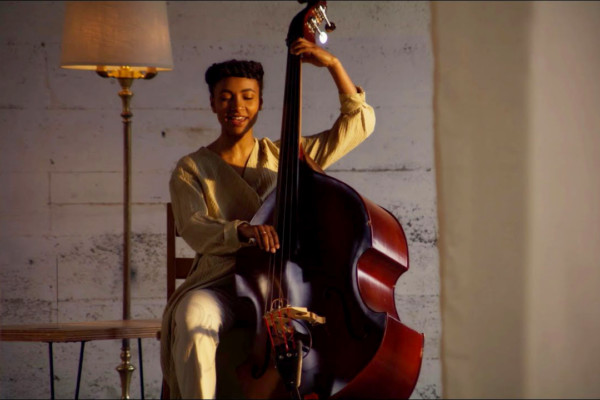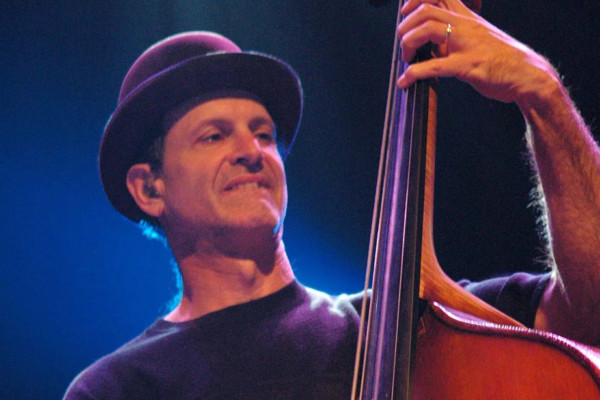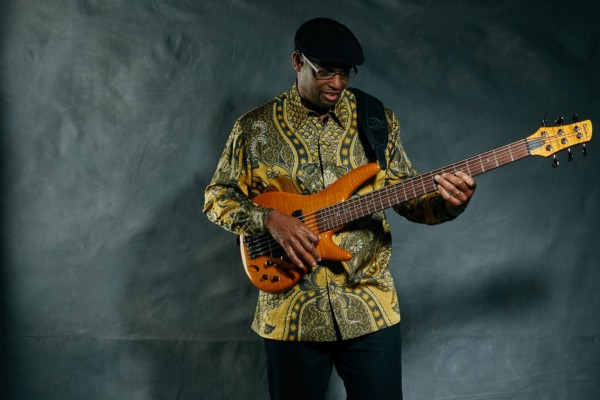Bass Players To Know: Jim Hughart
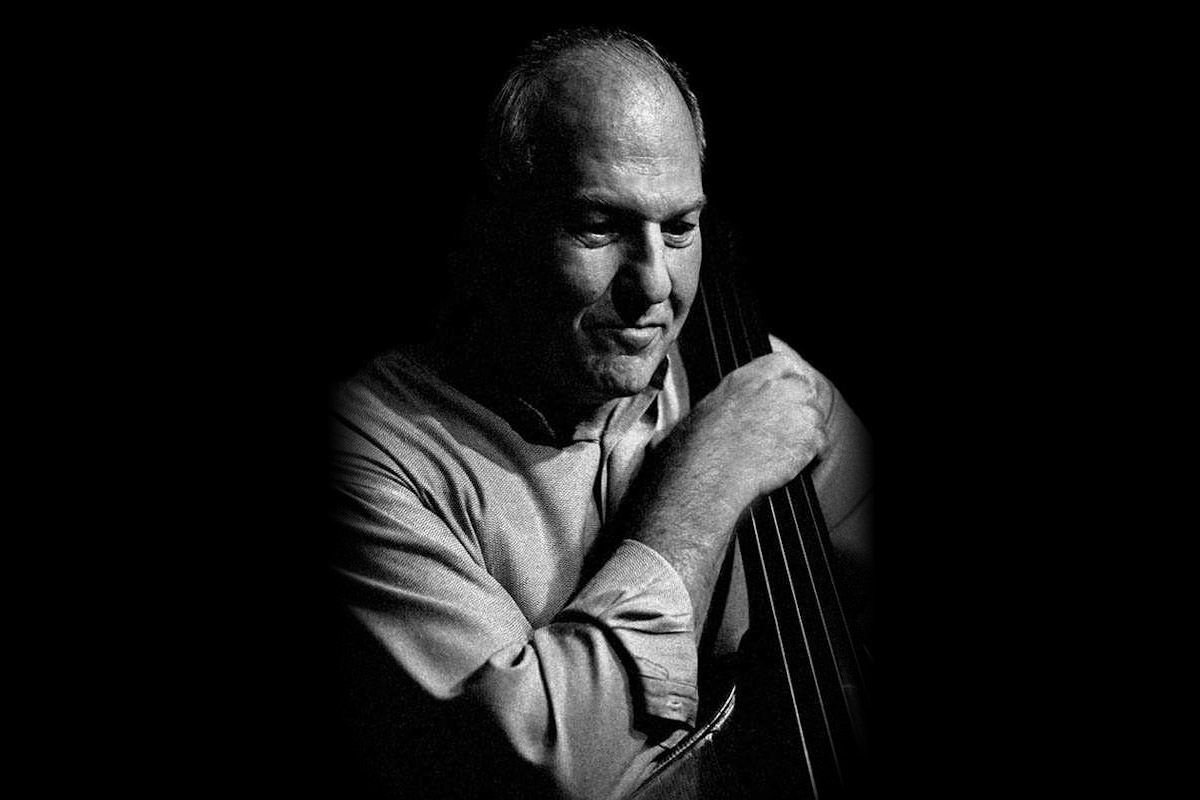
A seasoned sideman with a soulful and sophisticated approach, Jim Hughart has not only backed up some of the greatest jazz artists, but has stood out as a first call session musician on the Los Angeles recording scene. Frequently accompanying Joe Pass and Tom Waits, his premier upright playing can be heard on records of all genres. With a career spanning over forty years, his long list of recording credits include artists as diverse as Ella Fitzgerald, Duke Ellington, Joni Mitchell, Johnny Rivers, Natalie Cole, and Celine Dion.
So Who Is Jim Hughart?
A native of Minneapolis, Minnesota and the son of an upright bassist with both the Minneapolis and San Diego Symphonies, Hughart began studying the instrument at a young age. After attending the University of Minnesota for Music Composition and Theory, he served in the military as a bassist with the 7th Army Symphony Orchestra. Hughart had developed a relationship with fellow bassist Ray Brown and, after returning from service, Brown recommended him to Ella Fitzgerald. In addition to touring and recording Ella and Duke at the Cote D’Azur with Fitzgerald and Duke Ellington, Hughart moved to Los Angeles in 1964 and quickly became a first call session musician.
Between the mid-1960’s and 1980’s, Hughart laid down the bass lines for most Joe Pass and Tom Waits records, in addition to touring with the artists and playing on other major label sessions. His list of recording credits bridge the gap between jazz and popular music with artists including The Monkees, Joan Baez, Joni Mitchell, Herb Alpert, Daryl Hall and John Oates, David Axelrod, and Linda Ronstadt. As his recording career continued through the early 2000’s, his bass lines can be heard on records by Rosemary Clooney, Natalie Cole, Celine Dion, Nina Simone, Joao Gilberto, Michael Feinstein, and music for film and television.
Let’s Talk Style
While Hughart may not be a household name in the world of upright bassists, his resume, playing style, and overall musicality certify him as an artist that is both specialized and diverse. His playing is specialized thanks to his deep understanding of theory, modern and traditional harmony, and musical sensitivity, making him an obvious call for jazz ensembles and music arranged for film and television. At the same time, he’s an incredibly versatile player who understands the subtlety of songwriting, supporting the artist, and the role of the upright bass in popular music. That said, he swings with the best of them, walks a bass line like no other, and knows how to play exactly the right thing at exactly the right time.
Some of his most intriguing work stems from utilizing his hip understanding of jazz accompaniment in the context of popular, folk, and rock records produced in the 1970’s. Comparable to how Richard Davis accompanied this new breed of enlightened songwriters (Van Morrison, Janis Ian, etc.), Hughart fulfilled a similar role with Tom Waits and Joni Mitchell. By integrating higher register themes, foundational movement, and an element of call-and-response with the vocals and other instrumentalists, his playing is authentic, inspired, and collaboratively minded in the way it serves the song.
Where Can I Hear Him?
“Them There Eyes” (Joe Pass: Summer Nights)
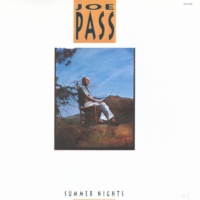 On this sprightly and swinging final track, Hughart anchors the band with his brisk walking line, impeccable timing, and masterful movement around the neck of the upright. He provides the rhythmic pacing for the band and expertly outlines the changes by intertwining melodic movement and arpeggios. This exemplary model of dexterity and musicality certify him as an obvious master of the instrument.
On this sprightly and swinging final track, Hughart anchors the band with his brisk walking line, impeccable timing, and masterful movement around the neck of the upright. He provides the rhythmic pacing for the band and expertly outlines the changes by intertwining melodic movement and arpeggios. This exemplary model of dexterity and musicality certify him as an obvious master of the instrument.
Listen:
“Step Right Up” (Tom Waits: Small Change)
 Few records highlight the upright bass like this particular Tom Waits project. Hughart creates the backdrop for Waits’ vocals and the blowing saxophone by playing a groovy and defined musical theme. The bass line, a four-bar phrase, is composed of two alternating patterns that perfectly combine dissonance and resolution. While bars one and three remain the same, bar two resolves to the root by an ascending chromatic line and bar four resolves with a descending chromatic line.
Few records highlight the upright bass like this particular Tom Waits project. Hughart creates the backdrop for Waits’ vocals and the blowing saxophone by playing a groovy and defined musical theme. The bass line, a four-bar phrase, is composed of two alternating patterns that perfectly combine dissonance and resolution. While bars one and three remain the same, bar two resolves to the root by an ascending chromatic line and bar four resolves with a descending chromatic line.
Listen: iTunes | Amazon MP3
“The Heart Of Saturday Night” (Tom Waits: The Heart Of Saturday Night)
 As a fundamental element of Waits’ band, Hughart performs a beautiful and thoughtful accompaniment to this heartfelt song. He jumps back and forth between a melodic theme played on the higher register of the instrument and fulfilling the traditional bass duties by anchoring the changes in the lower register.
As a fundamental element of Waits’ band, Hughart performs a beautiful and thoughtful accompaniment to this heartfelt song. He jumps back and forth between a melodic theme played on the higher register of the instrument and fulfilling the traditional bass duties by anchoring the changes in the lower register.
Listen: iTunes | Amazon MP3
How about you? What’s your favorite tune or album with Jim Hughart? Please share with us in the comments.
Ryan Madora is a professional bass player, author, and educator living in Nashville, TN. In addition to touring and session work, she teaches private lessons and masterclasses to students of all levels. Visit her website to learn more!

